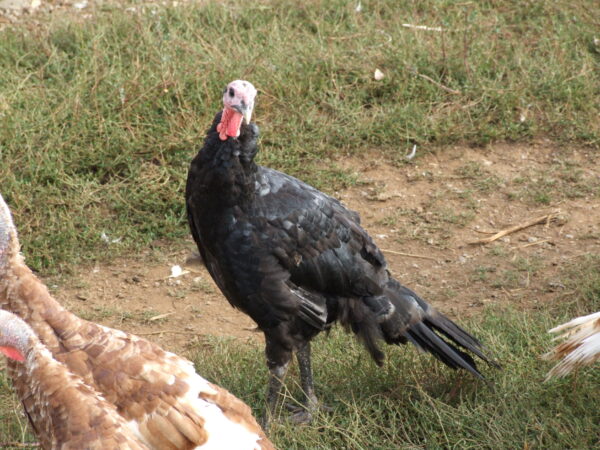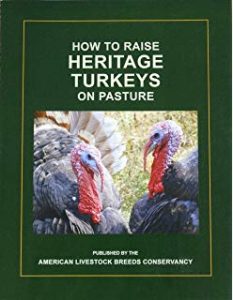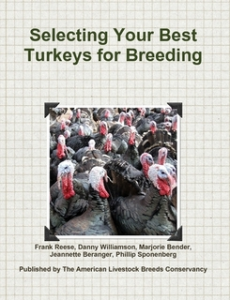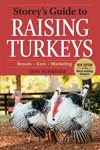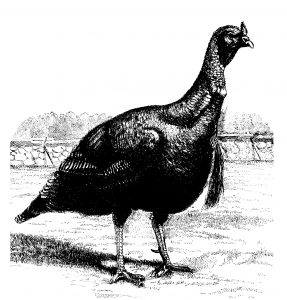
Breed Facts
Status:
Watch
Use:
Meat
Egg Color:
Pale cream to medium brown with spotting
Egg Size:
Large
Market:
Male Young – 23 Mature – 27
Female Young – 14 Mature – 18
Temperament:
Highly dependent on socialization and selection by breeder; some select for aggressive, others docile
Characteristics:
Can fly
BLACK TURKEY
The Black turkey originated in Europe as a direct descendant of the Mexican turkeys taken home by explorers in the 1500s. Black-colored turkeys became popular in Spain where they were known as “Black Spanish.” They were popular in the Norfolk region of England, where they were known as “Norfolk Blacks.” After being selected for meat production for more than two centuries, the Black Spanish turkey made the voyage back to the Americas with early European colonists.
Once here, were further selected and improved. This variety was raised commercially through the early part of the 20th century, though not as popular as Bronze, White Holland, Narragansett, or Bourbon Red varieties. A 1937 Turkey World article states that Blacks were bred in large numbers along the East Coast, including in Maryland and Virginia. Their popularity was enhanced by selection for a calm disposition, rapid growth, and early maturation.
The Black was recognized in the American Poultry Association Standard of Perfection in 1874. Their plumage is a lustrous, metallic black with a greenish sheen on top and a dull black under-color. It is undesirable to have a brownish or bronze cast or any white, however, poults will often have white or bronze in their first feathers. This is molted when mature black plumage comes in. The beak is black. The wattle is red, changeable to bluish-white. The shanks and toes are pink in adults. Eye color is dark brown. The skin is usually white, as in all turkey varieties, but some writers describe a yellow tinge to the skin that is not seen in other varieties. This observation is influenced by diet; turkeys on range with access to green feed and corn tend to have a more yellow cast to the skin.
The standard weight is 23 lbs. for young toms and 27 lbs. for mature birds. Young hens average 14 lbs and grow to a mature weight of 18 lbs, making them slightly smaller than the Bronze. Some flocks are smaller than breed standard, but good selection can reverse this.
Black turkey hens begin laying at a year of age and lay 40-50 cream to medium-brown speckled eggs a year. Their rate of lay declines as they mature, although they can be productive until they are up to 7 years of age.
They do well in most climates but can suffer from frostbite in extremely cold temperatures and they appreciate shelter from rain and snow. Black turkeys also benefit from shade and plenty of water in the heat, due to heat absorption. They can fly, and will roost in trees unless trained to come home at the end of the day.
The Black turkey has performed well in recent years both on the homestead for personal use or for sale to discerning consumers.
While generally known as the Black turkey, the terms “Norfolk Black” and “Black Spanish” are also used in the US when referring to this variety. All these terms refer to the same Black variety.
Did you know:
Livestock Conservancy Program staff have more than 175 cumulative years of heritage breed experience. We hold Ph.D.s in veterinary medicine, genetics, and biology. We are the most experienced livestock conservation team in the world.

Breed Facts
Status:
Watch
Use:
Meat
Egg Color:
Pale cream to medium brown with spotting
Egg Size:
Large
Market Weight:
14 – 23 lbs
Temperament:
Highly dependent on selection by breeder, Some select for aggressive, others docile
You may be interested in…

